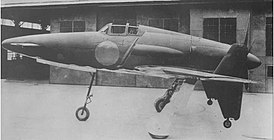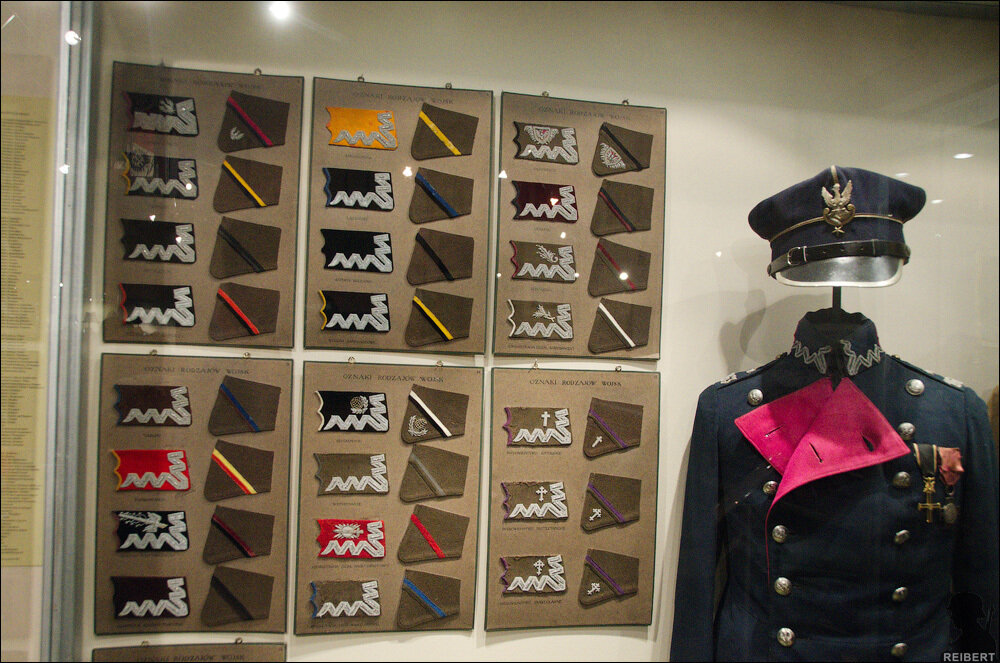
Fighter Kyushu J7W1 Shinden
The only Kyūshū J7W1 Shinden interceptor prototype built. Due to its unconventional aerodynamic layout, it was undoubtedly the most unusual aircraft built in Japan during World War II.
It was supposed to be a fast, well-armed interceptor designed to deal with American Boeing B-29 Superfortress bombers. It had an unconventional canard aerodynamic system that, despite only one prototype being built and tested, remains to this day one of the most recognizable Japanese aircraft produced during World War II. Surrender interrupted the further development of this unusual aircraft.
The captain was the creator of the Shinden fighter concept. Mar. (tai) Masaoki Tsuruno, a former naval aviation pilot serving in the Aviation Department (Hikoki-bu) of the Naval Aviation Arsenal (Kaigun Koku Gijutsusho; Kugisho for short) in Yokosuka. at the turn of 1942/43, on his own initiative, he began designing a fighter in an unconventional "duck" aerodynamic configuration, i.e. with horizontal plumage in front (before the center of gravity) and wings behind (behind the center of gravity). The "duck" system was not new, on the contrary - many aircraft of the pioneer period in the development of aviation were built in this configuration. After the so-called In the classical layout, aircraft with front plumage were rare and practically did not go beyond the scope of the experiment.
Prototype J7W1 after being captured by the Americans. The aircraft is now repaired after damage inflicted by the Japanese, but has yet to be painted. A large deviation from the vertical of the landing gear is clearly visible.
The "duck" layout has many advantages over the classic one. The empennage generates additional lift (in a classical layout, the tail creates an opposite lift force to balance the lift pitch moment), so for a certain takeoff weight it is possible to build a glider with wings with a smaller lift area. Placing the horizontal tail in the undisturbed airflow in front of the wings improves maneuverability around the pitch axis. The tail and wings are not surrounded by an air stream, and the forward fuselage has a small cross section, which reduces the overall aerodynamic drag of the airframe.
There is practically no stalling phenomenon, because when the angle of attack increases to critical values, the flows first break down and the lift force on the front tail is lost, which causes the nose of the aircraft to lower, and thereby the angle of attack decreases, which prevents the separation of the jets and the loss of the power carrier on the wings. The small forward fuselage and cockpit position in front of the wings improve visibility forward and down to the sides. On the other hand, in such a system it is much more difficult to ensure sufficient directional (lateral) stability and controllability around the yaw axis, as well as longitudinal stability after flap deflection (i.e. after a large increase in lift on the wings). ).
In a duck-shaped aircraft, the most obvious design solution is to place the engine in the rear of the fuselage and drive the propeller with pusher blades. Although this may cause some problems in ensuring proper engine cooling and access for inspection or repair, it frees up space in the nose for mounting weapons concentrated close to the longitudinal axis of the fuselage. In addition, the engine is located behind the pilot.
provides additional fire protection. However, in the event of an emergency landing after being pulled out of bed, it can crush the cockpit. This aerodynamic system required the use of a front wheel chassis, which was still a big novelty in Japan at the time.
A draft design of the aircraft designed in this way was submitted to the Technical Department of the Main Aviation Directorate of the Navy (Kaigun Koku Honbu Gijutsubu) as a candidate for an otsu-type interceptor (abbreviated as kyokuchi) (see box). According to preliminary calculations, the aircraft should have had much better flight performance than the twin-engine Nakajima J5N1 Tenrai, designed in response to the 18-shi kyokusen specification of January 1943. Due to the unconventional aerodynamic system, Tsuruno's design was met with reluctance. or, at best, distrust on the part of conservative Kaigun Koku Honbu officers. However, he received strong support from Comdr. Lieutenant (chusa) Minoru Gendy of the Naval General Staff (Gunreibu).
To test the flight qualities of the future fighter, it was decided to first build and test in flight an experimental MXY6 airframe (see box), which has the same aerodynamic layout and dimensions as the projected fighter. In August 1943, a 1:6 scale model was tested in a wind tunnel in Kugisho. Their results proved promising, confirming the correctness of Tsuruno's concept and giving hope for the success of the aircraft he designed. Therefore, in February 1944, the Kaigun Koku Honbu accepted the idea of creating an unconventional fighter, including it in the development program for new aircraft as an otsu-type interceptor. While not formally implemented within the 18-shi kyokusen specification, it is contractually referred to as an alternative to the failed J5N1.
